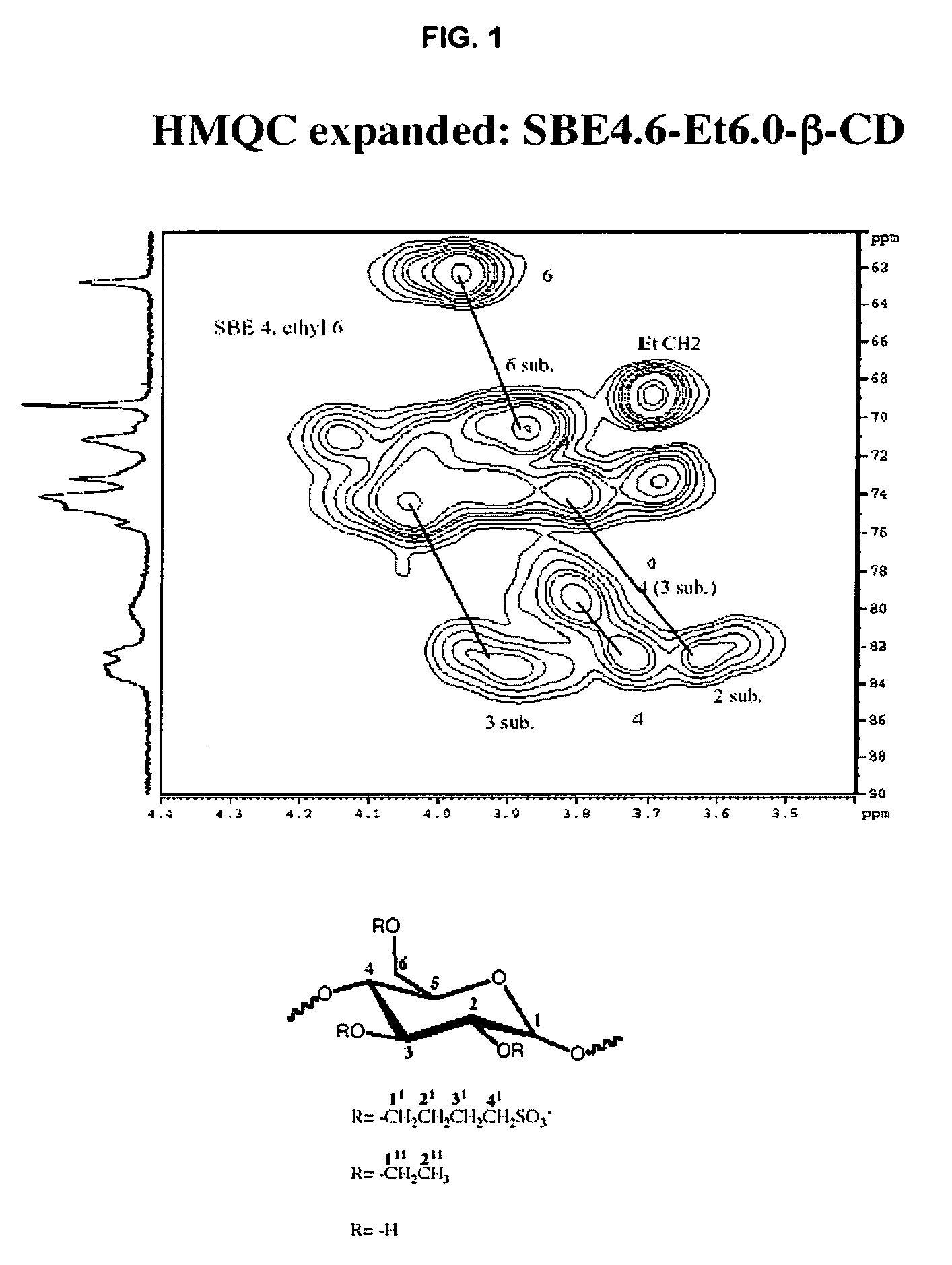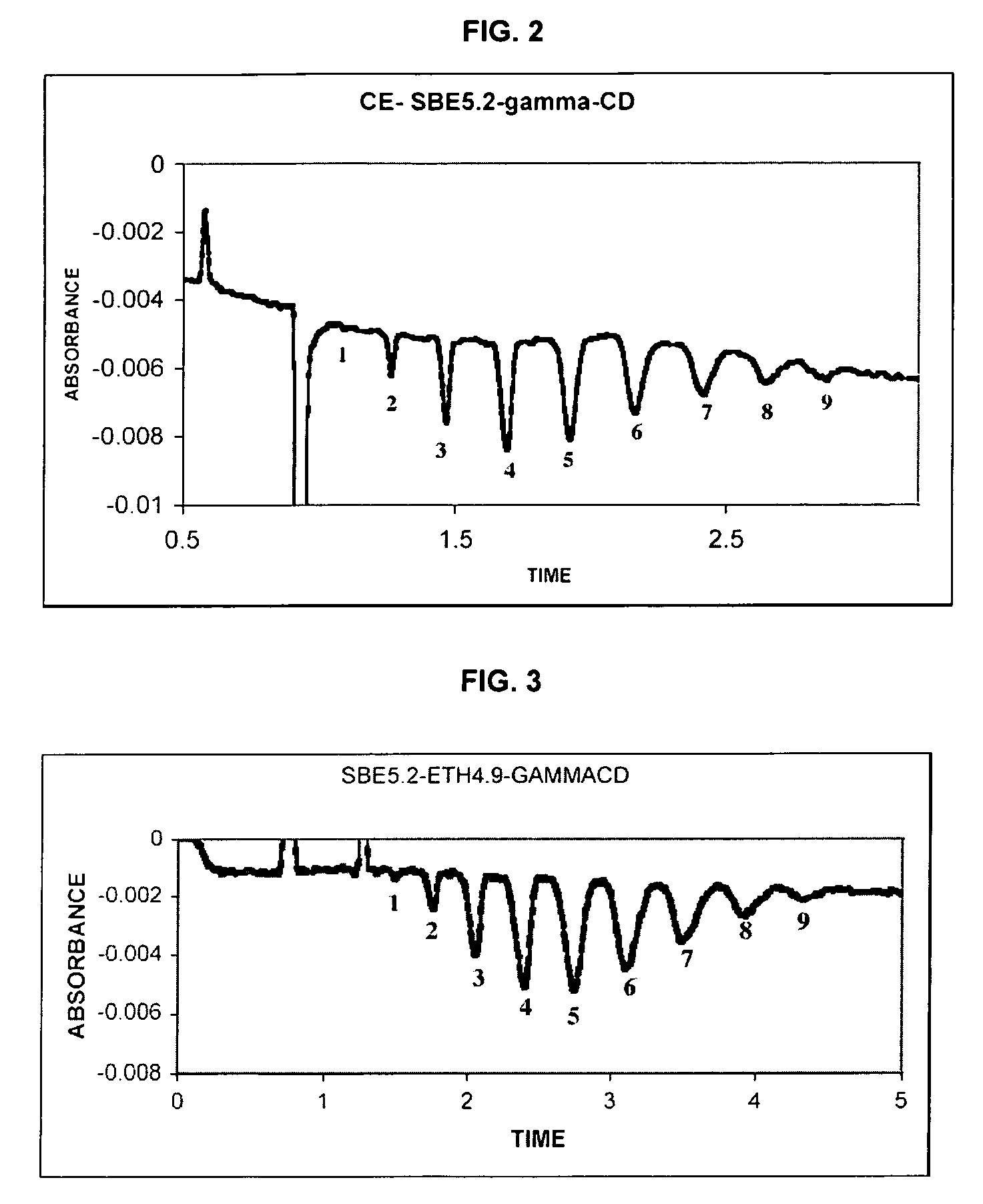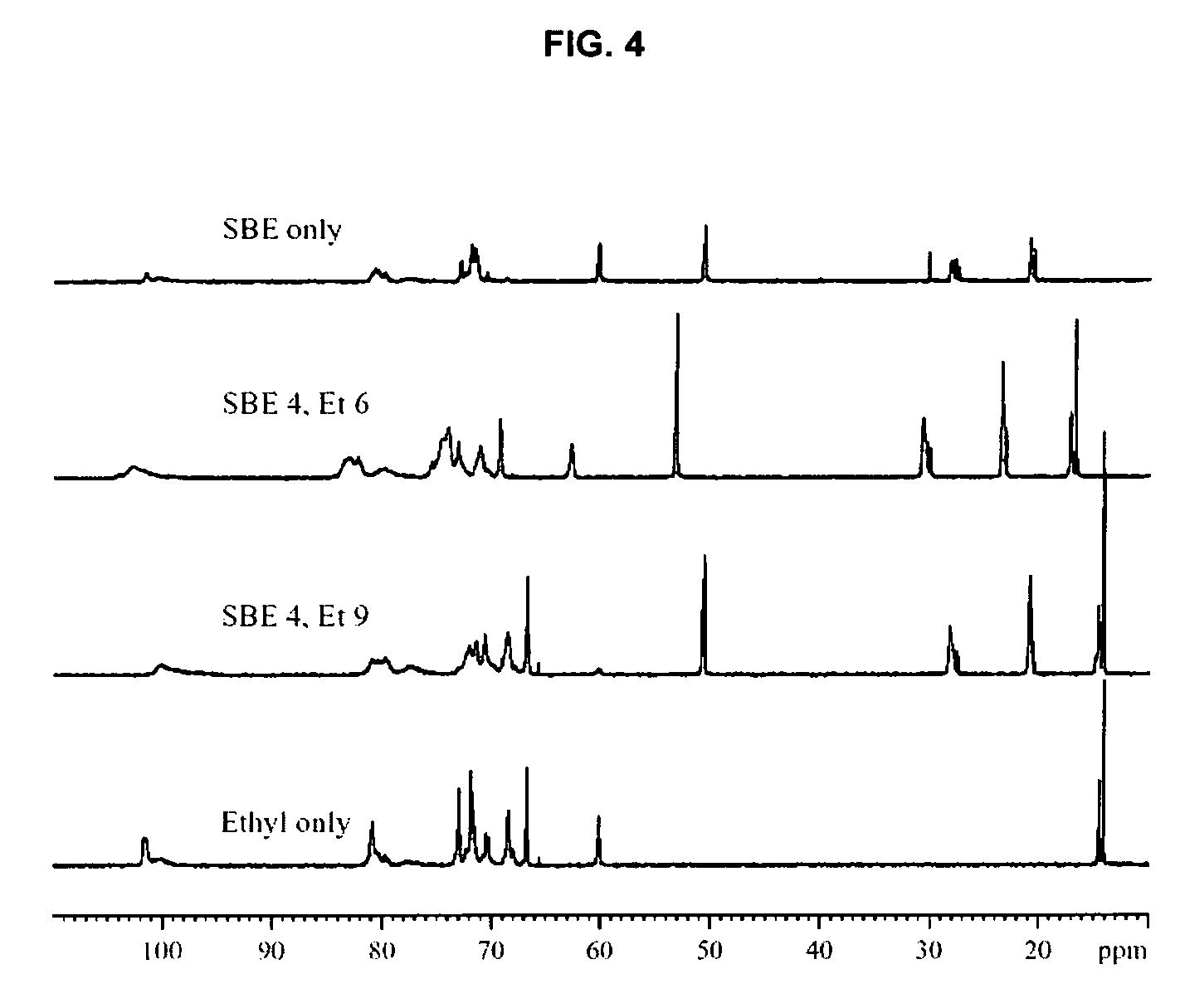Sulfoalkyl ether-alkyl ether cyclodextrin derivatives
a technology of alkyl ether and cyclodextrin, which is applied in the field of water-soluble cyclodextrin derivatives, can solve the problems of red blood cell hemolysis, membrane irritation, and complex rapidly dissociation, and achieve the effects of improving properties and/or performance, increasing the substitution degree of sulfoalkyl ether moiety, and decreasing the substitution degree of alkyl ether moiety
- Summary
- Abstract
- Description
- Claims
- Application Information
AI Technical Summary
Benefits of technology
Problems solved by technology
Method used
Image
Examples
example 1
[0212]An exemplary SAEx-AEy-CD according to the invention can be made using the following general procedure, wherein an SAE-CD in an alkaline aqueous medium is derivatized with an AE precursor to form the SAEx-AEy-CD.
[0213]SAEx-CD is placed in an aqueous medium in the presence of an alkaline material present in an amount sufficient to render the resulting mixture alkaline and deprotonate at least one of the hydroxyl substituents of the cyclodextrin ring. An AE precursor is added to the mixture in a molar amount sufficient to etherify the SAEx-CD to form the SAEx-AEy-CD having the desired DS for AE. The alkaline material may be added before during or after exposure of the SAEx-CD to the AE precursor. The ratio of y:x may be determined by control of the molar ratio of AE precursor to SAEx-CD before or during the reaction period, or it can be determined after completion of the reaction or after completion of purification of the SAEx-AEy-CD by other methods described herein.
example 2
[0214]An exemplary SAEx-AEy-CD according to the invention can be made using the following alternate general procedure, wherein an AE-CD in an alkaline aqueous medium is derivatized with an SAE precursor to form the SAEx-AEy-CD.
[0215]AEy-CD is placed in an aqueous medium in the presence of an alkaline material present in an amount sufficient to render the resulting mixture alkaline and deprotonate at least one of the hydroxyl substituents of the cyclodextrin ring. An SAE precursor is added to the mixture in a molar amount sufficient to etherify the AEy-CD to form the SAEx-AEy-CD having the desired DS for SAE. The alkaline material may be added before during or after exposure of the AEy-CD to the SAE precursor. The ratio of y:x might be determined by control of the molar ratio of SAE precursor to AEy-CD before or during the reaction period, or it can be determined after completion of the reaction or after completion of purification of the SAEx-AEy-CD by other methods described herein....
example 3
[0216]An exemplary SAEx-AEy-CD according to the invention can be made using the following alternate general procedure, wherein an underivatized parent CD in an alkaline aqueous medium is derivatized with an SAE precursor and an AE precursor to form the SAEx-AEy-CD.
[0217]Parent cyclodextrin (CDz, wherein “z” indicated the number of moles) is placed in an aqueous medium in the presence of an alkaline material present in an amount sufficient to render the resulting mixture alkaline and deprotonate at least one of the hydroxyl substituents of the cyclodextrin ring. An SAE precursor, an AE precursor or a mixture thereof is added to the parent cyclodextrin in a molar amount sufficient to etherify the parent CD to form the SAE-CD, AE-CD or SAEx-AEy-CD, respectively. The alkaline material may be added before during or after exposure of the parent CD to the precursors. The SAE precursor and AE precursor can be added sequentially, simultaneously, or in an overlapping manner. The molar ratios ...
PUM
| Property | Measurement | Unit |
|---|---|---|
| pH | aaaaa | aaaaa |
| pore size | aaaaa | aaaaa |
| length | aaaaa | aaaaa |
Abstract
Description
Claims
Application Information
 Login to View More
Login to View More - R&D
- Intellectual Property
- Life Sciences
- Materials
- Tech Scout
- Unparalleled Data Quality
- Higher Quality Content
- 60% Fewer Hallucinations
Browse by: Latest US Patents, China's latest patents, Technical Efficacy Thesaurus, Application Domain, Technology Topic, Popular Technical Reports.
© 2025 PatSnap. All rights reserved.Legal|Privacy policy|Modern Slavery Act Transparency Statement|Sitemap|About US| Contact US: help@patsnap.com



